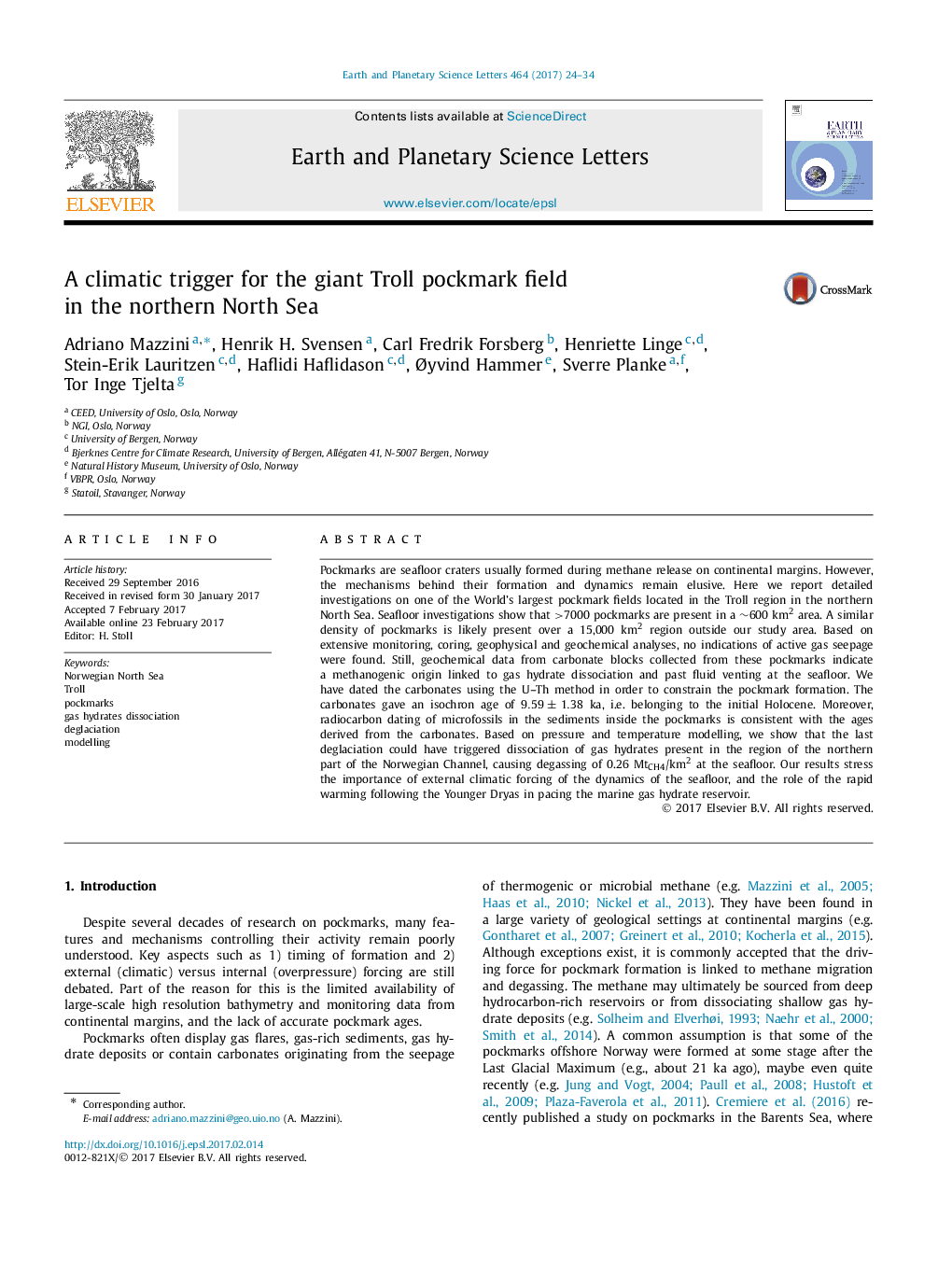| کد مقاله | کد نشریه | سال انتشار | مقاله انگلیسی | نسخه تمام متن |
|---|---|---|---|---|
| 5779908 | 1634692 | 2017 | 11 صفحه PDF | دانلود رایگان |
- One of the World's largest pockmark fields (more than 7000) was investigated.
- The field is not active, dating reveals formation during the initial Holocene.
- Modelling shows gas hydrate dissociation is a likely triggering mechanism.
Pockmarks are seafloor craters usually formed during methane release on continental margins. However, the mechanisms behind their formation and dynamics remain elusive. Here we report detailed investigations on one of the World's largest pockmark fields located in the Troll region in the northern North Sea. Seafloor investigations show that >7000 pockmarks are present in a â¼600 km2 area. A similar density of pockmarks is likely present over a 15,000 km2 region outside our study area. Based on extensive monitoring, coring, geophysical and geochemical analyses, no indications of active gas seepage were found. Still, geochemical data from carbonate blocks collected from these pockmarks indicate a methanogenic origin linked to gas hydrate dissociation and past fluid venting at the seafloor. We have dated the carbonates using the U-Th method in order to constrain the pockmark formation. The carbonates gave an isochron age of 9.59±1.38ka, i.e. belonging to the initial Holocene. Moreover, radiocarbon dating of microfossils in the sediments inside the pockmarks is consistent with the ages derived from the carbonates. Based on pressure and temperature modelling, we show that the last deglaciation could have triggered dissociation of gas hydrates present in the region of the northern part of the Norwegian Channel, causing degassing of 0.26 MtCH4/km2 at the seafloor. Our results stress the importance of external climatic forcing of the dynamics of the seafloor, and the role of the rapid warming following the Younger Dryas in pacing the marine gas hydrate reservoir.
Journal: Earth and Planetary Science Letters - Volume 464, 15 April 2017, Pages 24-34
